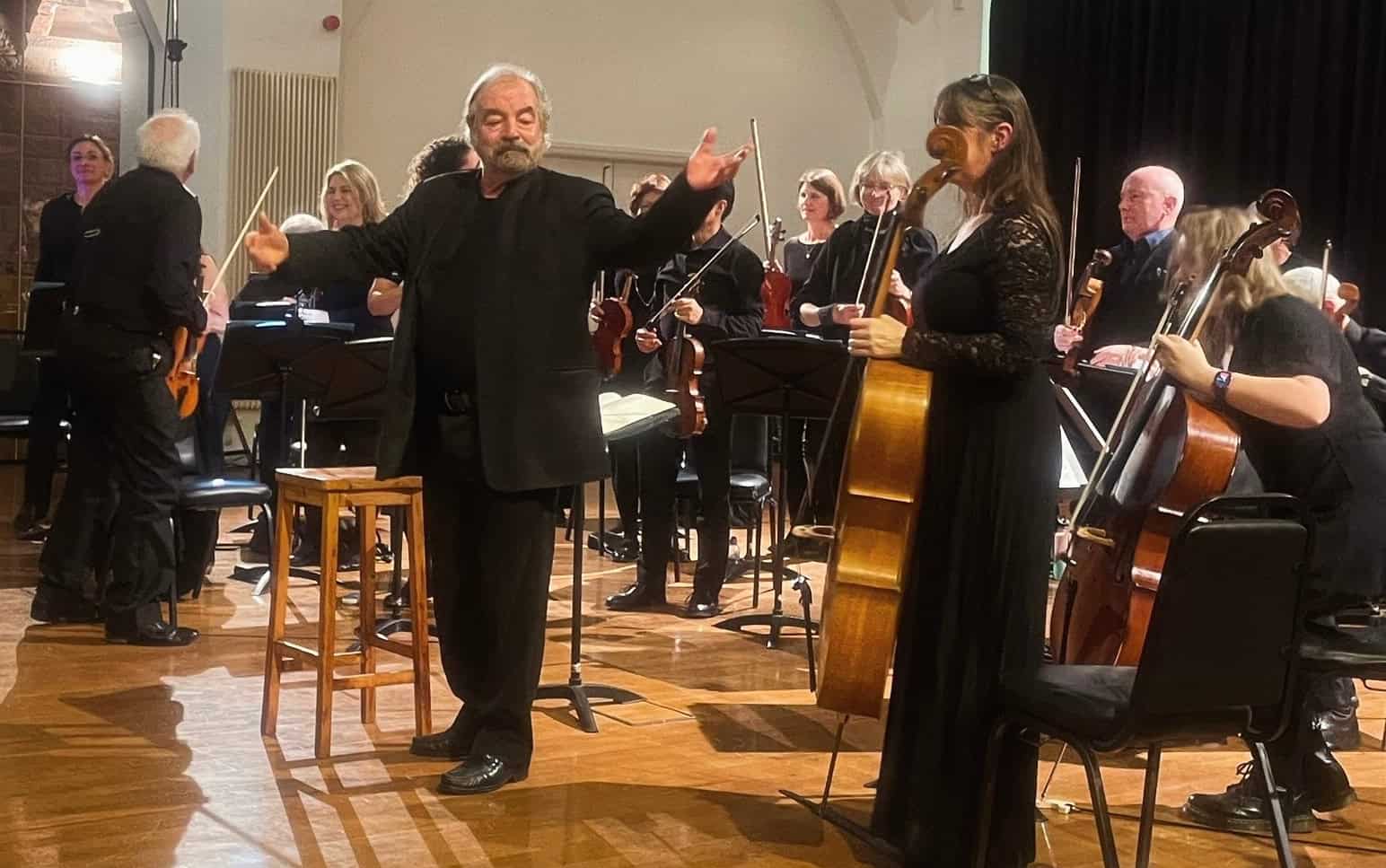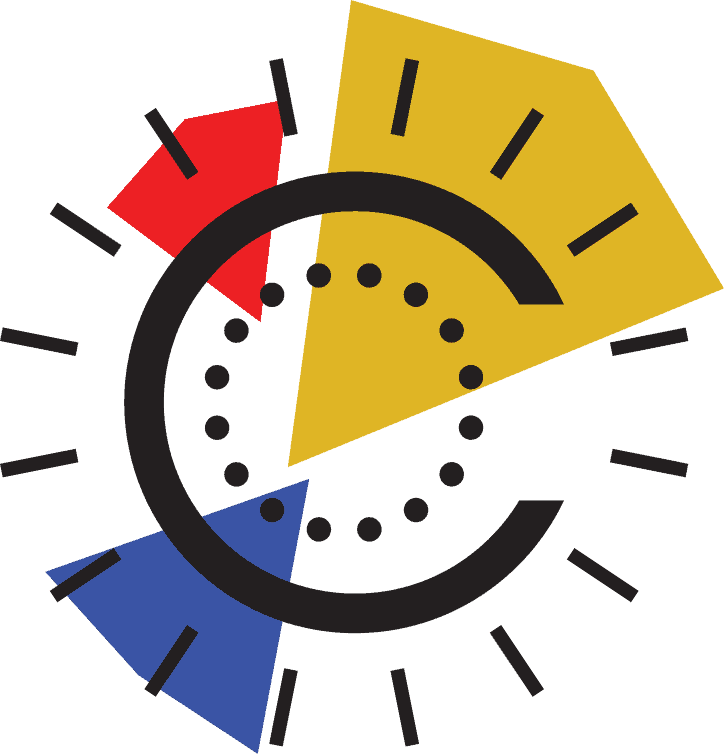Mozart and Joseph Boulogne
Saturday, 26 October 2024 - 7:30pm
The Great Hall . . .
Liverpool Hope University
Creative Campus
17 Shaw Street
Liverpool
L6 1HP
Celebrating Black History Month, an annual event held in October. It is also a memorial tribute to our colleague, Mark Julius.
Programme:
Hope Metropolitan Orchestra
Conductor: Stephen Pratt
Joseph Bologne - Symphony No. 1
Mozart - Six German Dances (K600)
Joseph Bologne - Symphony No. 2
Mozart - Symphony No. 40 in G minor (K550)

The Two Chevaliers concert was a great success! The orchestra was on good form, and there was prolonged applause from an enthusiastic audience at the end. The concert was a tribute to Mark Julius, who led the orchestra’s second violins for many years and who died in January of this year. He had planned the concert programme as a contribution to Black History month. Mark’s family and close friends attended and were delighted with the event.

Stephen Pratt & the orchestra acknowledge the applause at the end of the Two Chevaliers concert (26/10/2024)
"The orchestra, conducted by Stephen Pratt, brought Mozart and Joseph Bologne's music to life in a vibrant way. It was fascinating to hear Bologne's symphonies alongside Mozart's; both composers had such unique voices, and seeing Bologne finally getting the recognition he deserved was beautiful. The warmth and energy of the orchestra filled the whole evening. This thoughtful programme commemorating Black History Month and honouring Mark Julius was enlightening and inspiring."
Mai Sanchez, student
Stephen Pratt’s notes about Mozart & Boulogne
It maybe came as no surprise that the extraordinary life of Joseph Boulogne, Chevalier de Saint-Georges attracted the attention of Los Angeles-based film company Searchlight Pictures, who went on the make the 2022 biopic Chevalier. The film has had the positive impact of bringing Boulogne’s music to a wider public, though it has to be said that the telling of his life is somewhat fictionalised. Whilst it is true that both Mozart and Boulogne were in Paris at the same time, in 1778, there is little evidence that they met, let alone had the ‘cadenza-duel’ with which the film opens. Planning for his trip, Mozart knew from earlier correspondence with Mannheim musicians that the best orchestra in Paris was not the well-established Concert Spirituel but the Concert des Amateurs, directed by Boulogne. However, in the event his ‘Paris’ symphony (k.279) (composed during this visit) was actually written for the Concert Spirituel, directed by Joseph Legros. Some years later, Boulogne did meet Joseph Haydn and directed the composer’s own ‘Paris’ Symphonies in 1786 with the Concert de la loge Olympique, an orchestra famed for having 40 violins, and which had effectively been the successor to the Concert des Amateurs.
It is generally thought that Boulogne (or Bologne) was born in the French colony of Guadaloupe on Christmas Day, 1745 to a young slave who was known as Nanon. His date of birth was based on a that given in his death certificate, but there is documentary evidence that Boulogne believed the year of his birth to be 1748. The father was George Boulogne de Saint-Georges, a white wealthy plantation owner, and in the detailed (but uncredited) biography in Artaria Editions (https://www.artaria.com/pages/saint-georges-joseph-bologne-de-1745-1799) it is claimed that George was ‘undoubtedly’ in exile in Haiti by the time Joseph was born, which would confirm the later date. His exile came about because he had been accused of murder in 1747, and sentenced to death in his absence – it seems that the charge might have been somewhat flimsy and he was pardoned some years later. When he could, George left Guadaloupe for Paris and to his credit took not only his wife and her daughter, but Nanon and Joseph, who was seven at the time.
Once in Paris, George ensured that Joseph would have a good education, which he paid considerable sums for. Joseph had already shown talent as a violinist in Guadaloupe, and this talent continued to be nurtured in Paris. Additionally, he developed skills in dancing, riding and fencing, and he was to become an outstanding swordsman. But whilst his swordsmanship gained him many admirers (and money in exhibition duels) it was the violin that was to become his main activity. By the late 1760s he had become the leader of the Concert des Amateurs, and by 1773 became its director when the founder of the orchestra, Gossec, left for the Concert Spirituel. By now, he was active as a composer, and two early violin concertos were premiered by him with the Concert des Amateurs in 1772. The two symphonies (op.11) in tonight’s programme were written for this orchestra and were first performed in 1779. Both are written in the standard three movement (quick – slow -quick) pattern of the early symphony, with an andante at the centre and with gigue-like finales, scored for strings with pairs of oboes and horns. Boulogne’s rise within aristocratic circles brought him to the attention of Marie-Antoinette, who bestowed upon him the order of Chevalier, to which he appended the family name of de Saint-Georges. This status did not protect him from racial prejudice, however– a potential appointment as director of the Royal Academy of Music at the Opéra was blocked on the grounds of his colour. With the coming of the French revolution, Boulogne embraced the fight for equality and volunteered for the National Guard in Northern France. Despite early success as a commander, these were volatile times and as things changed he was imprisoned for nearly a year and lucky to escape the guillotine. His musical career never fully recovered, although once he had returned to Paris he did attempt to re-create the Concert de la loge Olympique, putting on concerts between 1797 and 1798. He died of a bladder infection in 1799, aged 53.
The two works by Mozart in tonight’s programme were composed toward the end of his life – the G minor Symphony (k.550) in the summer of 1788 and the Six German Dances (k.600) early in 1791. Whilst the circumstances of the composition of the symphony have been the subject of some debate, there is little doubt about the dances. In 1787 Mozart had been given a contract with the Viennese court by Joseph II. It would appear that the provision of dance music for the court balls in Vienna was one of the few duties required of Mozart in this position. After his death, both Haydn and Beethoven were similarly called upon to provide music for these spectacular events which were famous across Europe. For k.600, Mozart employed all the available instruments of the court orchestra. Although consisting of around forty players, including a full wind section, trumpets (clarini) and drums, there were (curiously) no violas in the orchestra. All six of the dances in k.600 are minuets, but each has a distinct personality.
The G minor symphony was the second of the three symphonies that Mozart wrote in a six-week period in the summer of 1788, and which turned out to be his last works in the genre. Although there has been some speculation that Mozart wrote them without planned performances and simply for himself, the Mozart scholar Neal Zaslaw scotched that idea in his 1989 study of the symphonies
Firstly, there are two versions of the work – a first, with oboes, and a second with both oboes and clarinets. Additionally, Mozart made alterations to the oboe parts of the first version. Zaslaw argues that such alterations would suggest that both versions had been performed or planned to be performed. Additionally, a set of orchestral parts was later discovered, which appear to date from before Mozart’s death. A possible date of performance would have been 16th/17th April 1791 at the Society of Musicians’ annual benefit concert which advertised a ‘grand symphony’ by Mozart, conducted by Salieri. The wind players engaged for the concert included the clarinettists Johann and Anton Stadler, so if we put all that evidence together the G minor is the most likely to have been the ‘grand symphony’ although we can’t discount the Eb, k.543, the first of the three.
The G minor is one of Mozart’s most chromatic works, and even as early as the beginning of the C19th was regarded as the most ‘modern’ (ie ‘romantic’) of his symphonies. There is an edge, a nervous urgency to the outer movements, which probably attracted that description. The slow movement, too, is quite dark in its shifting harmonies – especially in the move from the dominant (Bb) at the end of the first section to the unison C flats that open the second half. The minuet plays with the normal stresses of triple metre and the introduction of hemiola-like patterns (2+2+2) throughout. Only in the G major trio does the sun appear briefly, only for the clouds return in the final movement. Of all Mozart’s works, this is perhaps the one which tells us the most about where his music might have travelled had his life had been longer.
Stephen Pratt


